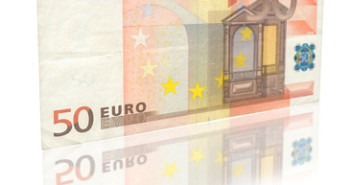EUR/USD continues to trade quietly ahead of the Christmas holiday. In Tuesday’s European session, the pair is trading in the mid-1.36 range. In the Eurozone, the only release today is French Consumer Spending. The indicator surprised the markets with a jump of 1.4%. In the US, there are two key events on the schedule – Core Durable Goods Orders and New Home Sales. The markets are expecting both indicators to show a rise in the November reading.
Here is a quick update on the technical situation, indicators, and market sentiment that moves euro/dollar.
EUR/USD Technical
- EUR/USD was steady in the Asian session, touching a high of 1.3713 early in the session and consolidating at 1.3689. The pair has edged lower in the European session.
- Current range: 1.3675 to 1.3710.
Further levels in both directions:Â 
- Below: 1.3675, 1.3615, 1.3525, 1.3440, 1.34, 1.3320, 1.3240, 1.3175 and 1.31.
- Above: 1.3710, 1.3800, 1.3832, 1.3940 and 1.4036.
- 1.3710 is the next resistance line. 1.3800 follows.
- On the downside, 1.3675 is providing weak support. 1.3615 is stronger.
EUR/USD Fundamentals
- 7:45 French Consumer Spending. Exp. 0.3%. Actual 1.4%.
- 13:30 US Core Durable Goods Orders. Exp. 0.9%.
- 13:30 US Durable Goods Orders. Exp. 0.9%.
- 14:00 US HPI. Exp. 0.5%.
- 15:00 US New Home Sales. Exp. 449K.
- 15:00 Richmond Manufacturing Index. Exp. 15 points.
For more events and lines, see the Euro to dollar forecast.
EUR/USD Sentiment
- French Consumer Spending climbs: The markets are not used to seeing strong numbers out of France, so Tuesday’s Consumer Spending data was unexpected good news. The indicator posted a gain of 1.4%, its strongest gain since September 2010.Four of the five past releases have been declines, and the November estimate stood at 0.3%. The solid reading comes after a string of poor releases from the Eurozone’s second largest economy. Services and Manufacturing PMIs pointed to contraction, while Industrial Production continues to post declines.
- Eurozone inflation continues to lag: The ECB has an inflation target of about 2%, but Eurozone inflation indicators are pointing to numbers well off that mark. Eurozone CPI improved to 0.9% in November, less than half of the ECB’s inflation target. German PPI posted a decline of 0.1%, the fourth decline in five releases. Germany is the Eurozone’s largest economy, and if the region is to shake off weak economic growth and high unemployment, it will need the German locomotive to lead the way.
- US GDP jumps in November: The week ended on a positive note, as US GDP climbed to 4.1% in Q3, compared to 2.6% in the previous quarter. It was the strongest reading since Q1 of 2010. The estimate stood at 3.6%. This excellent figure help push up the dollar, which had already posted sharp gains against the euro following the Fed’s taper announcement.
- Employment numbers disappoint: US employment data looked weak on Thursday. Unemployment Claims jumped to 379 thousand claims last week, up from 368 thousand the week before. This was well above the estimate of 336 thousand. The previous release’s weak numbers were attributed to the holiday season, but two consecutive bad releases will certainly not comfort the markets. There was more bad news to follow. Existing Home Sales posted its third consecutive decline, dropping to 4.90 million compared to 5.12 million in the previous release. The Philly Fed Manufacturing Index rose from 6.5 to 7.0 points, but this was way off the estimate of 10.3 points.
- Fed announces $10 billion taper to QE: There was plenty of drama preceding the Federal Reserve statement on Wednesday, and anyone hoping for exciting news was not left disappointed. The Fed announced that it was tapering its QE program by $10 billion a month, commencing in January. This will reduce the Fed’s asset purchases to $75 billion, comprised of $40 billion in Treasuries and $35 billion in mortgage bonds. The announcement came as somewhat of a surprise, as most analysts had not expected the Fed to take action until early next year. The currency markets reacted sharply to the news, and EUR/USD dropped over one cent.
- Fed yes to taper, no to rate hike: The Federal Reserve was careful to separate tapering expectations from rate hike expectations. Fed chairman Bernard Bernanke stated that interest rates are likely to remain low even after the unemployment rate drops below 6.5%. Previously, the Fed had stated that it would start to consider rate increases when unemployment fell below this level. Bottom line? With the unemployment rate at 7.0%, it could be a while before we see higher rates in the US.



